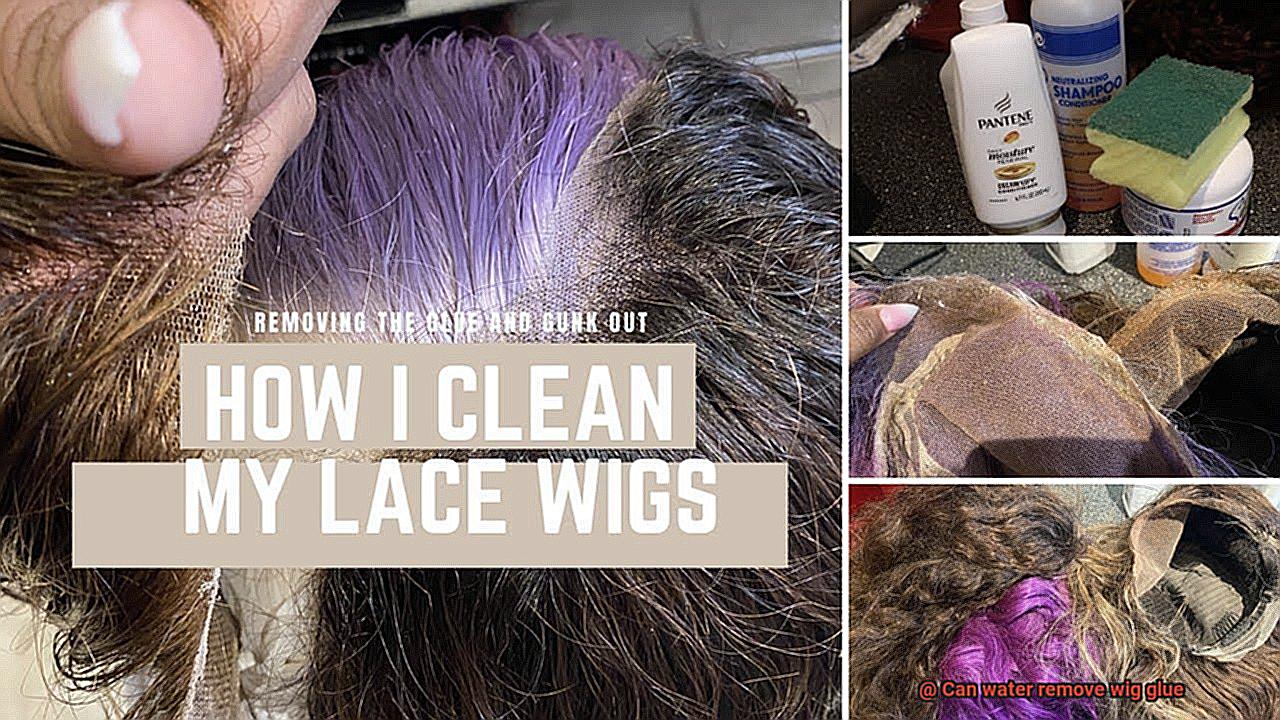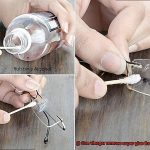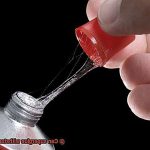Sick and tired of battling with wig glue at the end of a fabulous day?
Say goodbye to those struggles, my friend, because today we’re about to uncover the mind-blowing powers of water when it comes to wig glue removal. Whether you’re a seasoned pro or just dipping your toes into the wig-wearing world, we all know the frustration of trying to pry that stubborn adhesive off our scalps.
But can water really be the magical solution we’ve been dreaming of? In this blog post, we’re going on an adventure to explore just how effective water can be in loosening and removing wig glue.
So, grab yourself a cozy cuppa and let’s dive headfirst into this sticky situation.
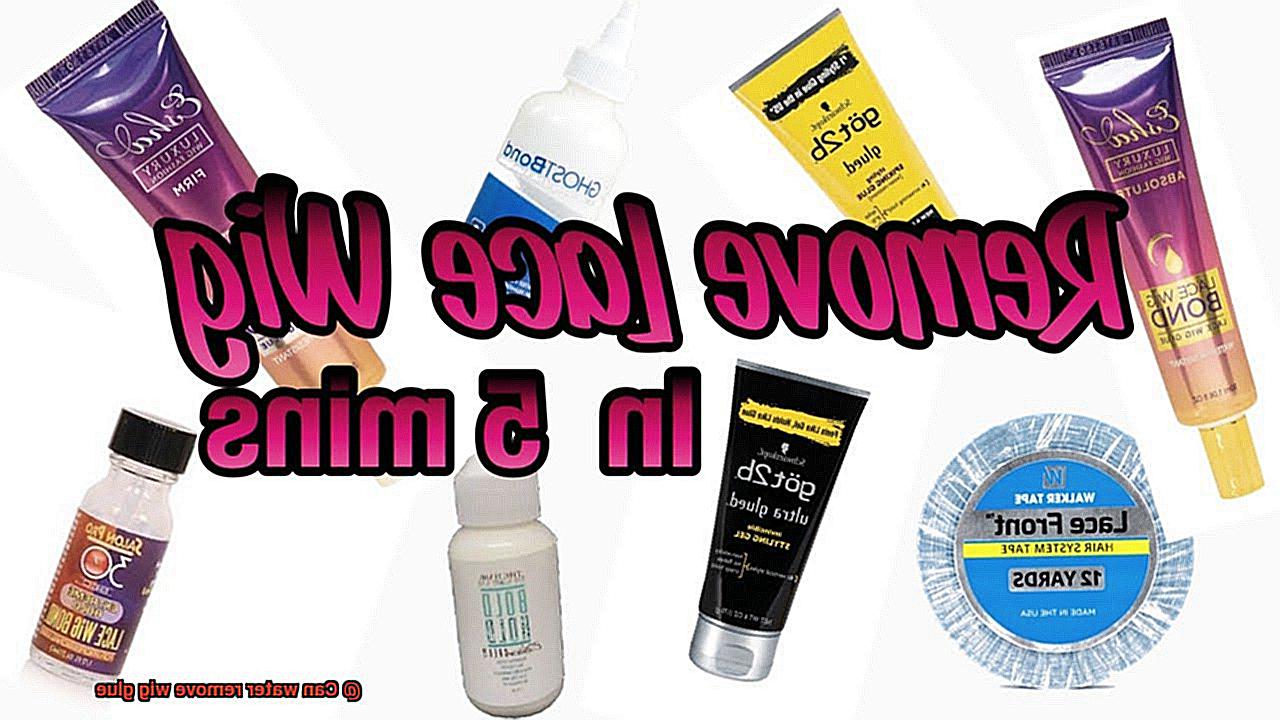
What Is Wig Glue?
Contents
Wig glue, also known as adhesive or bonding glue, is a must-have for anyone in the wig and hair extensions industry. It’s the secret weapon that keeps wigs securely in place for extended periods of time, giving you the confidence to rock any style without worrying about it shifting or coming off. But what exactly is wig glue and how does it work?
Wig glue comes in different forms, such as liquid, tape, and paste, each with its own unique properties and application methods. It’s made from a combination of synthetic polymers, solvents, and other ingredients that promote adhesion. When applied properly, wig glue creates a strong bond between the wig and your scalp, mimicking the natural attachment of hair to the head.
Using wig glue is a straightforward process. Start with clean and oil-free skin to ensure maximum effectiveness and a long-lasting hold. Apply the glue evenly along the hairline or specific areas where the wig will be attached. Depending on the type of glue you’re using, it may require some drying time before you can apply the wig.
One of the great things about wig glue is that it provides a secure hold without damaging your natural hair or causing discomfort. It allows you to experiment with different hairstyles and looks without making any permanent alterations or commitments. However, it’s crucial to follow directions and use caution when using wig glue to avoid any potential adverse effects on your scalp or hair.
Now, what if you’re ready to remove your wig? Can water do the trick? Well, water can be effective in removing some types of wig glue, but it may not work for all types or brands. Wig glue is typically designed to be water-resistant and long-lasting, so additional methods or products might be needed for complete removal.
If you want to try using water to remove wig glue, start by gently soaking the glued area in warm water for a few minutes. This can help loosen the glue and make it easier to remove. After soaking, carefully lift or peel off the wig, starting from one edge and moving towards the center. Be patient and avoid pulling or tugging forcefully, as this can damage the wig or your scalp.
If water alone doesn’t do the trick, you can try using an adhesive remover specifically designed for wig glue. These removers are available at beauty supply stores or online, and they can dissolve and loosen the glue for easier removal. Before applying the remover, make sure to read the instructions and perform a patch test on a small, inconspicuous area of the wig.
After successfully removing the glue, it’s important to properly clean and care for your wig to maintain its quality and longevity. This may involve washing it with a mild shampoo, conditioning it, and allowing it to air dry before styling or storing.
Can Water Remove Wig Glue?
Wigs are a fantastic way to experiment with different hairstyles, but removing the wig glue can be a challenge. Many people wonder if water alone can do the trick, but the reality is a bit more complicated. In this article, we will explore the effectiveness of water for removing wig glue and provide you with alternative methods that ensure a safe and hassle-free removal process.
Water and Wig Glue:
Contrary to popular belief, water alone is not usually effective in removing wig glue. Wig glue is specially formulated to withstand water exposure, making it resistant to dissolution. So simply wetting your wig won’t magically dissolve the adhesive. However, there are exceptions.
Water-Based Wig Glue:

Some wig glues are water-based and designed to be water-soluble. These types of glues can be easily removed with water alone. To determine if your wig glue is water-based, carefully read the product label or consult the manufacturer’s instructions. If it is indeed water-based, you can proceed with using water to remove the glue.
Alternative Methods:
If your wig glue is not water-based, fear not. There are alternative methods and products that can help dissolve and loosen the adhesive for an easier removal process.
Wig Adhesive Removers:
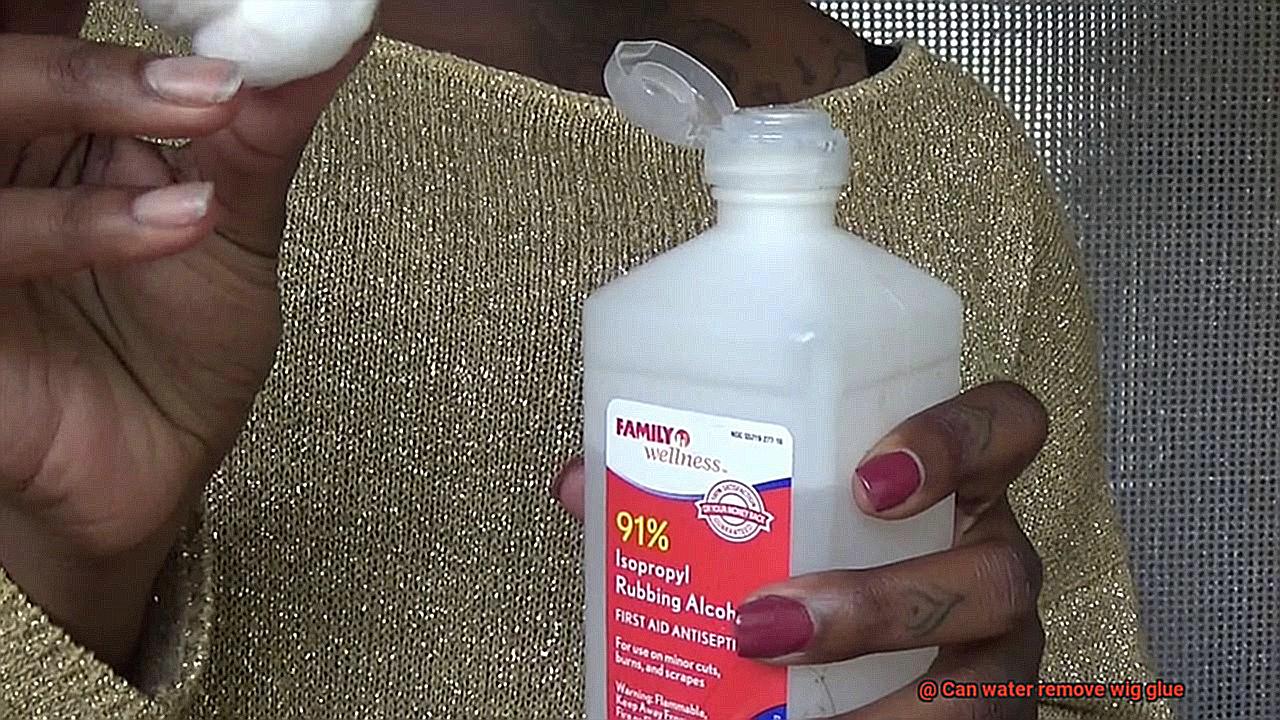
Specialized wig adhesive removers are specifically formulated to dissolve and remove wig glue without causing damage to your wig or scalp. Apply the remover directly to the glued area according to the instructions provided and allow sufficient time for it to work its magic before attempting to remove the wig.
Alcohol-Based Cleansers:
Alcohol-based cleansers can also be effective in breaking down wig glue. Apply these cleansers sparingly to avoid scalp dryness and irritation. Remember not to apply them directly to your scalp. Instead, focus on the glued areas and gently massage the adhesive to help loosen it.
Oils, Oils, Oils:
Coconut oil or baby oil can work wonders in softening and dissolving wig glue. Apply a generous amount of oil to the glued area and gently massage it in. After a few minutes, you’ll find that the adhesive becomes easier to remove.
Safety First:
Regardless of the method you choose, it’s crucial to be gentle and patient when removing wig glue. Avoid pulling or tugging on the wig, as this can cause damage to both the wig and your natural hair. Take your time and work slowly for a safe and effective removal process.
When in Doubt, Seek Professional Help:
If you’re unsure about safely removing wig glue or are facing difficulties during the process, it’s always best to seek professional help. Hairstylists or wig experts have the necessary knowledge and experience to ensure a safe removal without causing any damage.
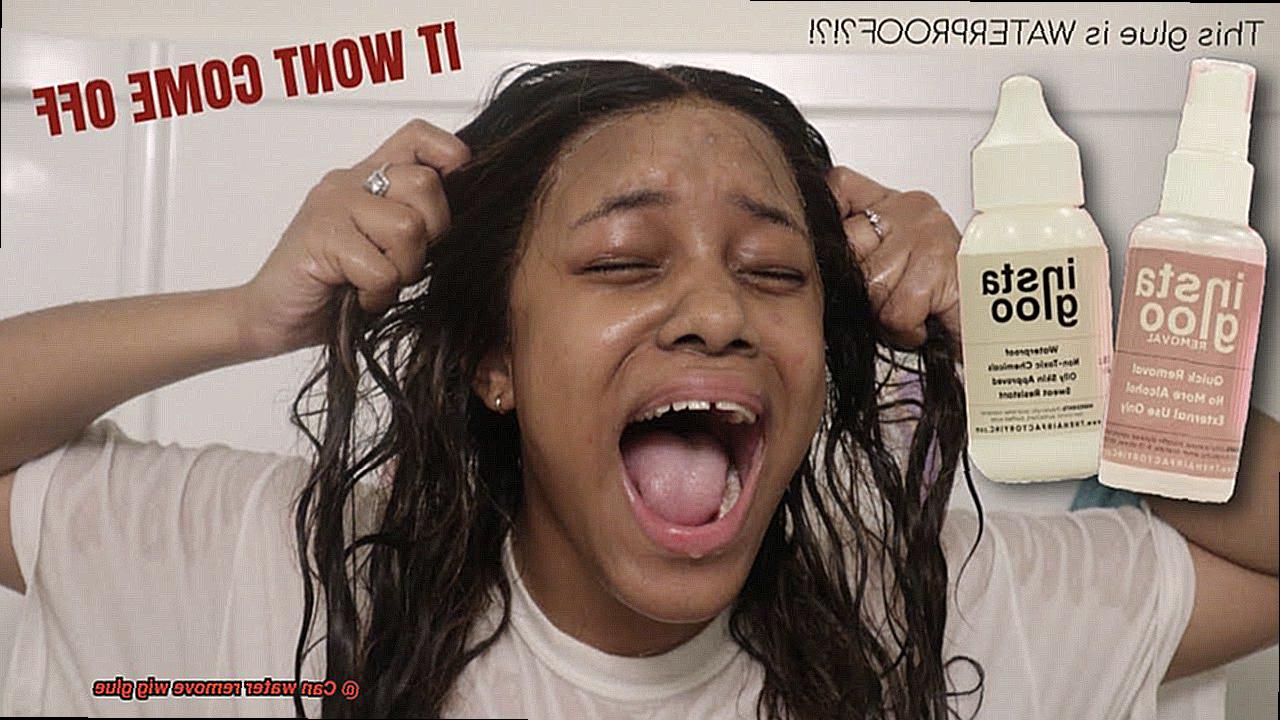
Advantages and Disadvantages of Using Water to Remove Wig Glue
Let’s dive into the intriguing world of wig glue removal.
Let’s start with the advantages of using water. Firstly, water is a gentle hero for your scalp. Unlike harsh chemical solvents or adhesive removers, water won’t cause any irritation or harm to your precious scalp.
It’s like a soothing oasis in a desert of potential discomfort. Secondly, water is a budget-friendly savior. Why spend extra cash on specialized products or solvents when good old H2O does the trick? You’ll be saving money without sacrificing results. Convenience is another feather in water’s cap. No wild goose chase for specific products – just turn on your faucet, and voila.
Easy access to the magical elixir of wig glue removal. Lastly, water is the knight in shining armor for synthetic wigs. Most synthetic wigs are glued using water-based adhesives, so using water to remove the glue ensures compatibility and reduces the risk of damage. It’s like a perfectly choreographed dance between wig and water.
Now let’s explore the flip side – the disadvantages. Brace yourself, my friend, because time might not be on your side. Removing stubborn glue or multiple layers can put your patience to the test.
You may need to wash and soak repeatedly to achieve that liberating moment of glue-free bliss. Another downside is that water might not stand a chance against strong adhesives.
If you’re dealing with a bond that could rival Hercules’ strength, you might need to explore other methods or solvents to untangle yourself from the grip of stubborn glue. And let’s not forget about potential messiness – a wild side effect of water warfare against wig glue. Moisture may spread onto other parts of your wig, temporarily altering its shape and turning it into a damp labyrinth. Not exactly the ideal scenario, is it?
Lastly, water may not be the perfect match for all wig types. If you’ve raised the stakes with a human hair wig secured with stronger adhesives, using water alone might not be enough to conquer the sticky situation.
How to Use Water to Remove Wig Glue
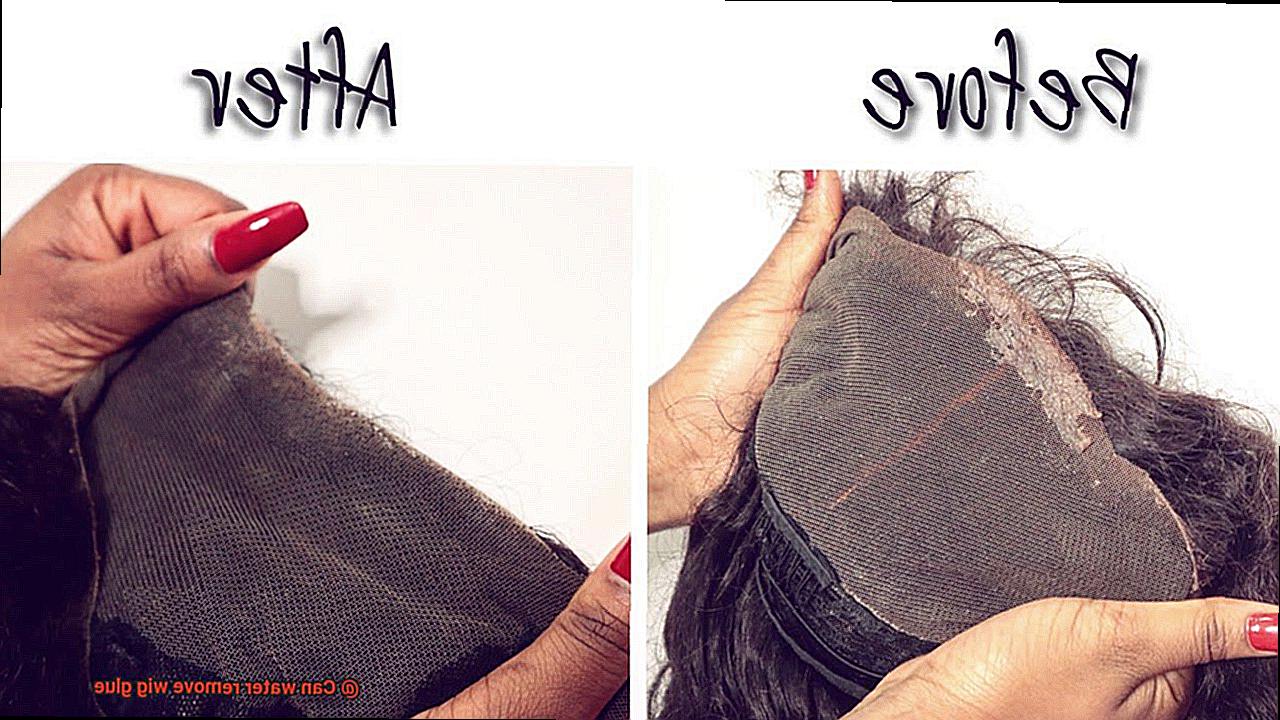
In this guide, we’ll explore the gentle and effective method of using water to remove wig glue. Get ready to embrace clean, beautiful hair without any damage or irritation.
Preparing Your Hair and Scalp:
Before diving into the water method, it’s important to prep your hair and scalp. Gently brush out any tangles or knots in your wig or natural hair, ensuring that the water can reach the glue more effectively for easier removal.
The Power of Warm Water:
Wet a towel or washcloth with warm water – not too hot, as it can cause discomfort or burns. The warmth softens the glue, making it easier to remove. Place the wet towel on top of the glued area, gently pressing down for good contact.
Allowing Penetration Time:
Patience is key. Leave the towel in place for about 10-15 minutes, allowing the water to penetrate the adhesive. This further softens the glue, making it more pliable for removal.
Gentle Rubbing Motion:
After the allotted time, carefully remove the towel and start gently rubbing the glued area with your fingers. The water should have loosened the glue, allowing you to easily peel it off. For stubborn spots, continue rubbing with damp fingers until all traces of glue are gone.
Rinse and Dry:
Once all the glue is removed, rinse your scalp or hairline with lukewarm water to eliminate any residue. You can also use a mild shampoo for an extra thorough cleanse. After rinsing, thoroughly dry your hair and scalp with a clean towel or low heat from a hairdryer to prevent bacterial growth or discomfort.
Conclusion:
Water is a natural and gentle solution for removing wig glue. However, keep in mind that it may not work as effectively on certain adhesives or if left on for an extended period. In such cases, consider using specialized adhesive removers or seeking professional help. Remember to be patient, gentle, and take care of your natural hair and scalp to maintain their health and integrity.
Other Methods for Removing Wig Glue

Don’t fret. Removing wig glue can be a hassle, but there are alternative methods that guarantee a smooth removal process without damaging your natural hair or scalp. In this article, we’ll explore various approaches, including oil-based removers, alcohol-based solutions, adhesive solvents, heat application, and professional wig removal.
Oil-based Removers:
Baby oil, coconut oil, and olive oil are popular choices for breaking down adhesive bonds effortlessly. Apply a generous amount to the glued area and gently massage it in. Let the oil sit for a few minutes before removing the wig. The adhesive will dissolve, making wig removal a breeze.
Alcohol-based Solutions:
Another effective option is using alcohol-based solutions to remove wig glue. However, exercise caution as they can dry out your skin or cause irritation if not used properly. Dampen a cotton pad or cloth with the solution and gently rub it over the glued area. Allow the solution to penetrate the glue for a few minutes before removing the wig.
Adhesive Solvents:
Designed specifically for adhesive removal, these solvents are safe for both wigs and natural hair. Follow the instructions carefully to ensure safe and effective removal of wig glue without any damage.
Heat Application:
If your wig glue is heat-sensitive, heat application is your go-to method. Use a hairdryer on low heat to warm up the glued area. The heat softens the adhesive, allowing you to remove the wig without discomfort or damage. Remember to keep the hairdryer at a safe distance from your scalp and continuously move it around to avoid concentrated heat.
Professional Wig Removal:
When in doubt or dealing with stubborn wig glue, seek professional help. Wig stylists or hairdressers have the expertise and experience to safely remove wigs without causing damage. They use professional-grade wig adhesive removers and tools, ensuring a smooth and hassle-free removal process.
Patch Testing Before Using Adhesive Removers
Before you reach for that adhesive remover to take off your wig or hair extensions, let me fill you in on an important step: patch testing. Trust me, it’s a small but crucial task that you don’t want to skip.
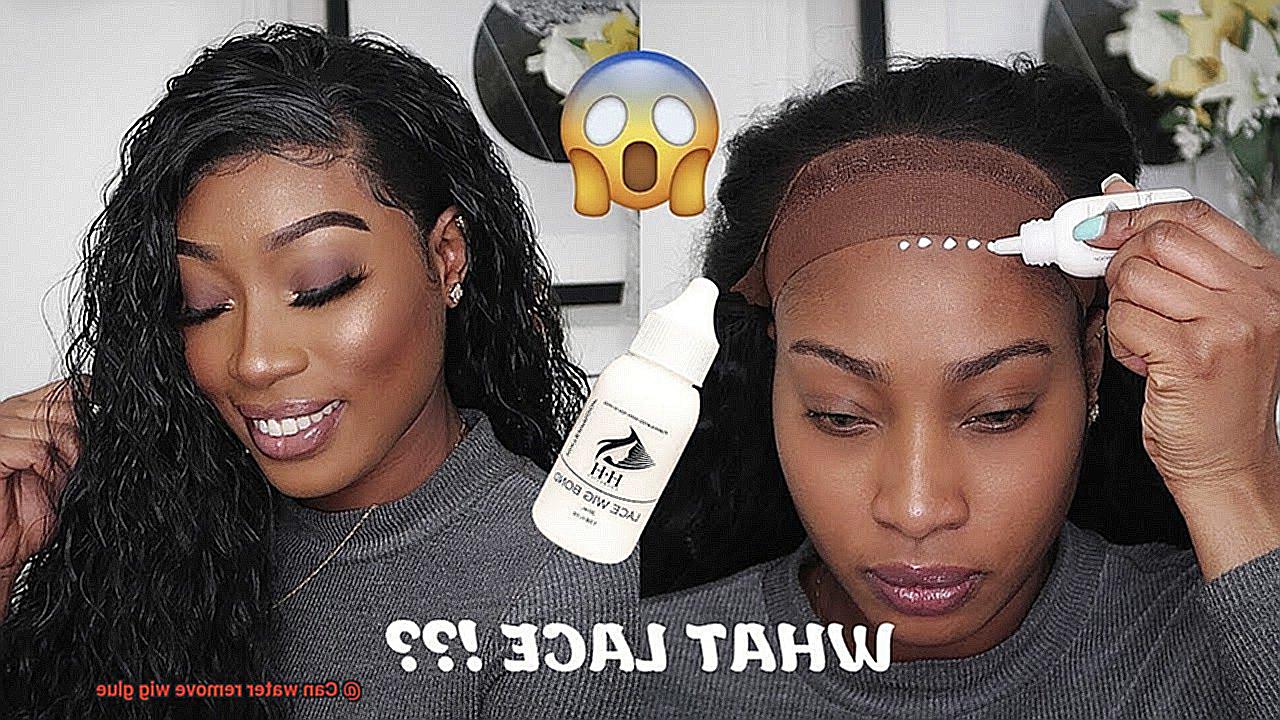
Adhesive removers are packed with different chemicals that have the potential to cause irritation, redness, itching, or even allergic reactions. That’s why it’s vital to perform a patch test before using them on your skin. This simple test allows you to apply a small amount of the adhesive remover to a small area of skin and observe for any adverse reactions.
Here’s how it works: choose a hidden spot on your body, like behind your ear or on your inner arm. Apply a small amount of the adhesive remover and leave it on for the recommended time (usually around 24 hours). During this period, keep a close eye out for any signs of irritation or allergic reactions such as redness, itching, swelling, or discomfort.
By conducting this patch test at least 24-48 hours before applying the adhesive remover to a larger area, you give yourself ample time to identify any delayed reactions that may occur. If you experience any adverse reactions during the patch test, it’s best to avoid using the adhesive remover altogether as it may cause further discomfort or more severe allergic reactions.
On the other hand, if the patch test goes smoothly and you have no adverse reactions, then it’s generally safe to proceed with using the adhesive remover on a larger area. Just remember to always follow the instructions on the product label and prioritize your safety and well-being.
Cleaning and Caring for the Wig After Removal
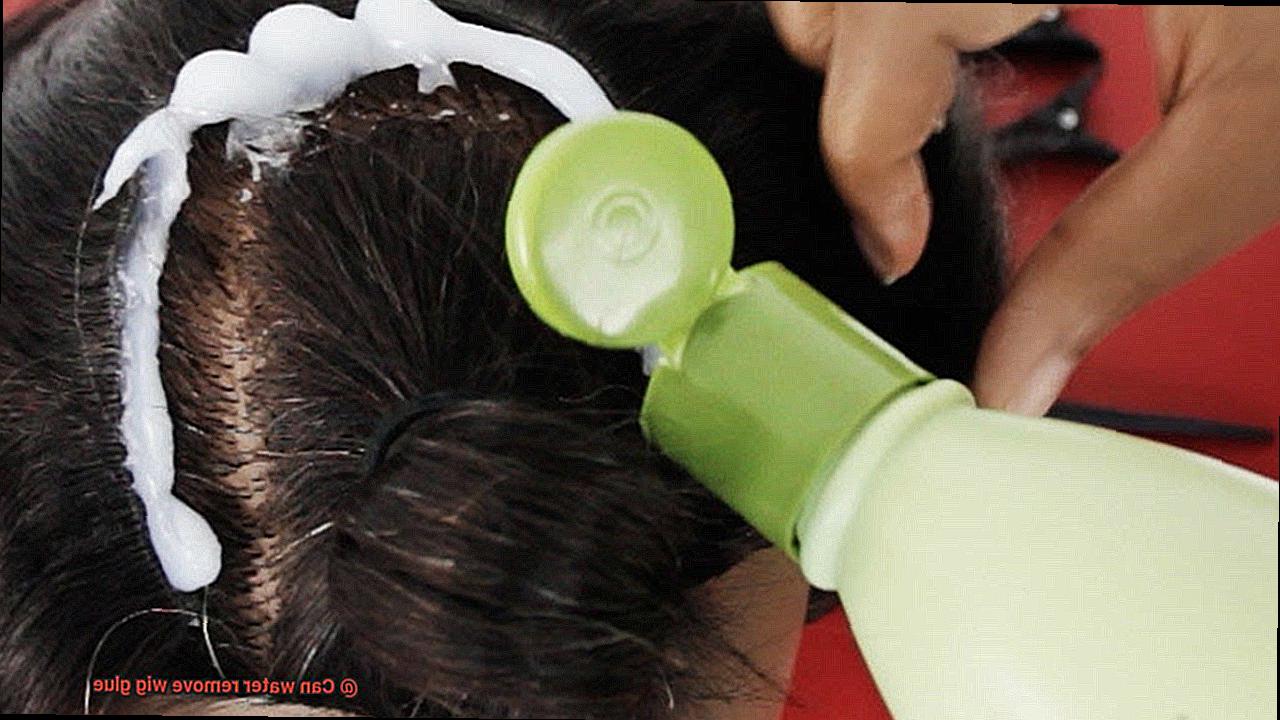
Wigs are a versatile accessory that can completely transform your look. Whether you wear wigs for fashion or medical reasons, proper cleaning and care are essential to maintain their quality and prolong their lifespan. In this comprehensive guide, we will walk you through the step-by-step process of cleaning your wig after removal, covering everything from adhesive removal to air drying and styling.
Step 1: Remove with Adhesive Remover
Begin by applying a small amount of adhesive remover on a hidden spot to check for any adverse reactions. Once confirmed safe, gently remove the wig, being extra cautious around areas where glue or adhesive may have been applied.
Step 2: Gentle Wig Removal
To avoid damaging the delicate hair fibers, gently remove the wig from your head. Take your time and be mindful of any areas where glue or adhesive may have been used.
Step 3: Clean with Mild Shampoo and Lukewarm Water
Place the wig on a wig stand or mannequin head to maintain its shape during cleaning. Fill a basin or sink with lukewarm water and add a small amount of wig shampoo. Swish the water gently to create suds, keeping in mind that hot water can damage synthetic fibers.
Step 4: Thoroughly Clean the Wig
Immerse the wig in the soapy water and gently agitate it to ensure all areas are thoroughly cleaned. Pay special attention to areas where glue or adhesive was applied. Massage the shampoo into the wig fibers using your fingertips, working from root to tip.
Step 5: Rinse and Condition
Rinse the wig under cool running water until all traces of shampoo are removed. To minimize tangling, rinse in one direction. Pat the excess water out with a clean towel, avoiding rubbing or wringing.
Step 6: Restore Shine and Softness
Apply a small amount of wig conditioner or detangler spray to restore shine and soften the hair fibers. Distribute the conditioner evenly using your fingers or a wide-toothed comb. Allow the conditioner to sit for a few minutes before rinsing it out with cool water.
Step 7: Air Dry and Style
Place the wig back on the wig stand or mannequin head and allow it to air dry naturally. Avoid using heat sources, as excessive heat can damage the wig fibers. Once dry, style the wig as desired.
WiDvmdXLSro” >
Also Read: How To Remove Glue In Hair Extensions?
Conclusion
To sum up, water can indeed be a powerful weapon in the battle against wig glue, but it’s not always the ultimate solution. Wig glue is crafted to resist water and stand the test of time, so you might need to explore additional options for complete removal.
If you’re keen on giving water a shot, start by immersing the glued area in warm water for a few minutes. This will help loosen the grip of the glue and make it easier to bid farewell. Once soaked, gently lift or peel off the wig, starting from an edge and working your way towards the center. Remember, patience is key here – don’t yank forcefully as that could spell disaster for your precious wig or delicate scalp.
Should water alone fail to deliver the desired results, fear not. There are adhesive removers specifically tailored for wig glue that you can try. These magical elixirs can dissolve and weaken even the most stubborn glues. You can find them at beauty supply stores or conveniently order them online. Just make sure to carefully read the instructions and perform a patch test on a small section of your wig before going all-in.
After successfully parting ways with the glue, don’t forget about proper post-glue removal care for your beloved wig. Treat it with kindness by washing it gently with a mild shampoo, conditioning it lovingly, and allowing it to air dry before styling or storing.
Always remember: handle with care. Be gentle and patient during this process to avoid any unpleasant consequences for your natural hair or scalp. If you find yourself unsure or facing challenges along the way, seek out professional assistance from hairstylists or wig experts who possess invaluable knowledge and experience.
To conclude once more, while water can be a trusty sidekick when battling certain types of wig glue, it’s crucial to keep in mind that it may not always save the day.

